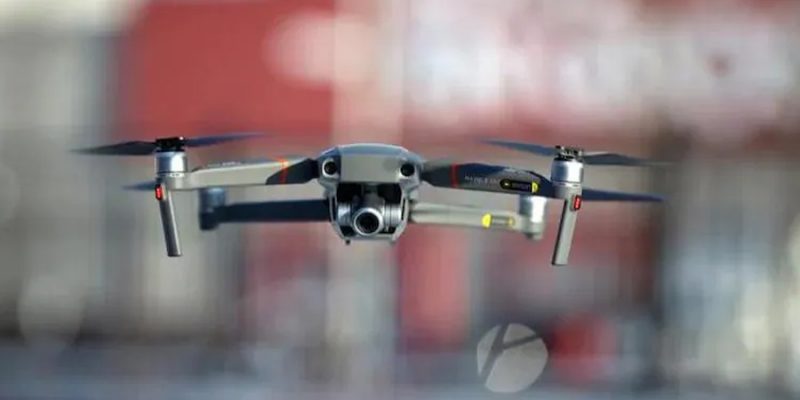
Medical drones aid in the delivery of more efficient healthcare to patients as well as an error-free health plan
Medical drones have proved to be very useful in the healthcare sector. Drones might transport drugs and supplies to patients who are being cared for at home rather than at a hospital. Outpatient and even home-based treatment will become increasingly common in the future, replacing hospital-based care. Drone technology might make providing home-based care easier and safer in many cases. When a clinician visits a patient at home, blood may be taken and transmitted to the lab via drone for testing. Provider-ordered medications, antibiotics, and therapies might be delivered to the patient’s house via drone.
This technology might enable more patients in nursing homes to get care at home for longer periods, increasing the freedom of the ageing baby boomer generation. A drone may keep an eye on a dementia sufferer at home or deliver a meal to someone unable to cook their food. Drone automated external defibrillators (AEDs) that fly to the patient in a public location to deliver quick defibrillation for ventricular fibrillation are something I can imagine. AEDs would no longer have to be obtained from a specific source that may be difficult to locate quickly. Simply press a button or use a smartphone app to summon the AED.
Mobile technology is already being used by healthcare companies to alleviate some of the industry’s difficulties. Healthcare is being transformed by mobile devices, wearable technology, remote monitoring, telemedicine, and information exchange platforms. Drones, robots and artificial intelligence will most likely take over many functions in healthcare now handled by people shortly, reducing variability, expense, and mistake.
Seattle’s VillageReach
This Seattle-based worldwide non-profit has partnered with Matter Net, a Silicon Valley-based drone business focused on autonomous transportation. Blood samples are being transported from outlying community hospitals to a big hospital in Lilongwe, the country’s capital city, as part of a current pilot experiment.
Flirtey
Flirtey, a Nevada-based firm, made its autonomous delivery of food, drink, and a first-aid package, bringing drone deliveries of first aid kits and emergency drugs one step closer. It provides a variety of drone services, including commercial drones, software for extracting information from raw data gathered by drones, and drone-related business services such as surveying and reconnaissance.
EHang
Lung Biotechnology PBC in the United States has agreed to create up to 1,000 units of EHang’s 184 drone, the world’s first autonomous drone capable of transporting a passenger. The goal is to automate the delivery of donated organs to patients across the country in times of need. Among the features of their GhostDrone 2.0 is self-protection, which makes it return swiftly in the event of a low battery or failed communication, and twin sensors, which provide a backup if the first sensor fails.
ZipLine
The Rwandan government has given ZipLine, a San Francisco-based UAV company, a contract to test delivering blood for transfusion across the country. The company’s drones transport whole blood, platelets, frozen plasma, and cryoprecipitate, as well as more than 220 pharmaceuticals, such as immunizations, infusions, and other medical supplies. During the COVID-19 pandemic in 2020, the US Federal Aviation Administration (FAA) granted Zipline’s partner firm Novant Health a Part 107 permit to transport medical supplies and personal protective equipment (PPE) to medical facilities in North Carolina.
TU Delft
The TU Delft Ambulance Drone is a prototype with a cardiac defibrillator, two-way communication, and video transmission. The drone would be deployed to the patient in the case of a cardiac arrest, and bystanders would be trained how to do CPR and utilise the automated defibrillator until emergency services came to take over.
Google Drones
In addition, Google has submitted a patent for a drone that would deliver medical assistance to persons in need. In the same way, as in the last case, the drone would arrive on the site before an ambulance. The patent also mentioned a gadget (or maybe a future app) that allows you to choose the type of emergency and displays the drone’s estimated arrival time.
Project Wing
Alphabet, Google’s parent firm, is also working on Project Wing, which will be used for disaster relief and the transportation of food, clean water, and other medical supplies. Both the United States (partially) and Queensland, Australia, have successfully tested the concept. The Federal Aviation Administration (FAA) gave it full authority last month to conduct full-scale testing at one of the FAA-approved locations.
Healthcare Integrated Rescue Operations (Hiro)
Subbarao, of Hattiesburg, Mississippi, is developing a telemedicine drone to help with the aftermath of natural catastrophes on US land. Following earlier tornadoes that left citizens trapped and inaccessible by ambulances, he envisions his drone being GPS-guided and capable of dropping down medical items.
Vayu Drones
Vayu Drones, which operate in Madagascar, have now successfully delivered excrement and blood samples to the country’s primary laboratory for examination. Although the drone resembles an aeroplane, it can take off vertically, eliminating the need for a runway. It will then fly to its destination on its own.



















